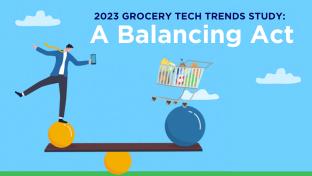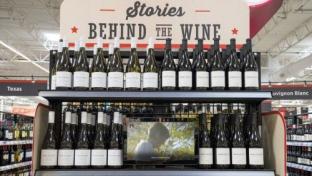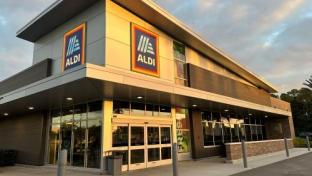EXCLUSIVE: What Is the Future of Grocery Automation?

Whether it’s technology that makes online grocery shopping easier or automation that replaces mundane tasks, the ever-present hum in today’s food retail ecosystem tends to revolve around solving problems or pain points with the latest technology. Progressive Grocer was on the ground at this year’s Groceryshop event, held Sept. 19-21 at Mandalay Bay in Las Vegas, and discussed with industry executives where grocery technology and automation should be headed in the next five years.
AI, Generative AI and Computer Vision
Tim Simmons, SVP and chief product officer, Sam’s Club:
In our clubs we do a lot of fresh production. Traditionally, a very difficult question to answer has been, at the club item level, how much should I make of this today? In the past, we relied on spreadsheets and binders and things that were highly inaccurate in their predictive capabilities. Now, we have AI and machine learning, and we’ve built an app that guides an associate through a production plan all based on an algorithm. We’ve seen how that can transform our business in terms of accuracy, simplifying the work of our associates and even creating a better member experience.
[Read more: "How Sam’s Club Prioritizes Innovation During Uncertain Times"]
With generative AI and computer vision, we are testing that everywhere. We’re learning a lot, we’re seeing the productivity it can bring and I do think it’s going to continue to be disruptive in terms of how it changes jobs, how it changes the way we work, the efficiencies it’ll drive, but also making the experience better. It’s definitely changing the way we do business.
Shelf Intelligence, In-Store Assistance, Replenishment
Brad Bogolea, CEO and co-founder, Simbe Robotics:
I do believe strongly that shelf intelligence is going to be one of the biggest things. That inventory piece is so critical. Customer service is also so important in retail. I think there will be a world that, when there are gaps in your ability to find someone in a store, you’ll be able to pick up your phone, load an app and ask a question.
It’s surprising to me how much manual order writing still happens in a lot of grocers out there today. Most retailers have computer-generated ordering systems, but I think having the shelf intelligence helps close the gap that exists in some of those places. I think we will continue to see even greater automation on things like replenishment as well.
Owning the Digital Relationship With Customers
Sean Turner, co-founder and chief technology officer, Swiftly:
Grocers are going to start thinking about the asset that they own differently. When you think about it, everybody wants to own the shopper digitally, and that’s very expensive to do. When you look at the advantage that brick-and-mortar retailers have, people have been trained through the pandemic to download brick-and-mortar retail apps. Ultimately, that’s a very valuable asset. When you think about what asset made Google so valuable, it was that Google owned the search for the shopper and they owned that digital relationship. I think grocers have that opportunity to become that next Google by owning that digital relationship. Now is their opportunity to shine.
Microfulfillment and Camera Technology
Shamus Hines, CEO, Upshop:
I think there’s been a lot of work done on microfulfillment and people have not gotten it nailed, but I think they’re going to continue to go at it. It’s unclear if it will ever be fully pulled out of the store, and you’ve got so much limitation around fresh and wanting to include that. There’s a stronger pull around wanting to broaden the basket and have more items in it that would make it harder to fully automate. I do see a lot of people focused on that.
The camera technology that’s coming out, it continues to enhance minute by minute and that helps with availability on the shelf. I think about that connecting into a broader platform that manages inventory like ours. Without that, you’re creating a lot of noise. If you’ve got something in the back room, if you have something in the truck ready to be delivered, there’s got to be a deeper level of intelligence beyond just spotting an issue and reporting it.
Home Delivery, Out-of-Stock Forecasting
Matt O’Grady, president, Americas, dunnhumby:
The pandemic has given us this huge lab of data and experiences to look at. What came out of it, which really surprised me, was pickup. That’s the result of automation and technology. Home delivery will continue to be valuable. Out-of-stock automation and technology could improve because there’s still too much out of stock. Automation and technology has got to keep track of forecasting and predicting what people are going to buy. That’s where machine learning and AI comes in, as well as the appropriate use of generative AI so the automation of the data will tell you when you’re going to be out of stock.
*Responses have been edited for length and clarity

c1dd.jpg)




